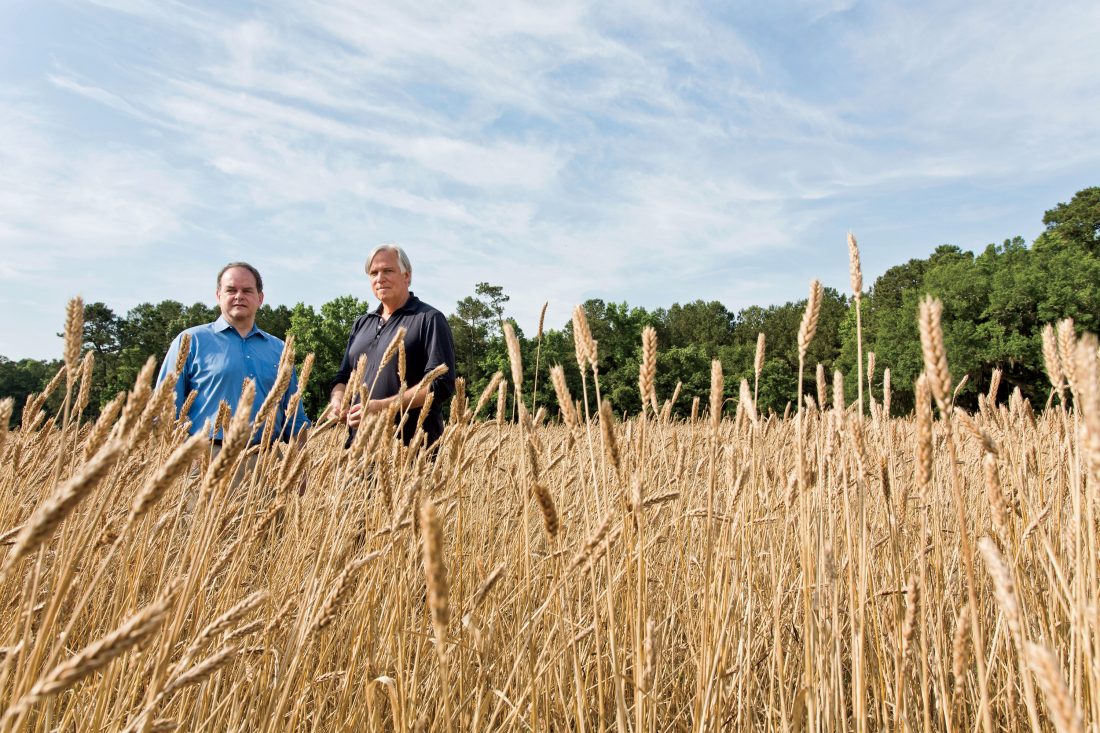Whether you know it or not, you’ve been missing out: You’ve never tasted a single sweet bite of Bradford watermelon, which David Shields calls “one of the absolute finest melons ever created.” Or a fat, tender stalk of Palmetto asparagus, a Southern staple until higher-yielding varieties crowded it off the market in the 1920s. Or the sweet, tasty Carolina African peanut—the original Southern peanut, brought from West Africa in the sixteenth century. But thanks to Shields and his informal collaborator Glenn Roberts, among others, it won’t be long until you can feast on all of those once-lost Southern flavors.
You could call Shields and Roberts flavor revivalists. They research and spearhead the return of some of the tastiest grains, seeds, fruits, and vegetables the South ever produced, but which during the last century vanished from fields, seed catalogs, menus, and dinner tables. Shields, a professor of Southern letters at the University of South Carolina, does the historical detective work, combing through dusty archives and obscure 1800s ag journals in search of culinary gems. Roberts plants the seeds that Shields discovers; he founded Anson Mills in Columbia, South Carolina, in 1998 to enlist farmers and bring back to market heritage grains, beans, and other all-but-forgotten crops, such as Carolina Gold rice and Sea Island red peas. The two men advise a circle of Southern chefs, farmers, seed savers, and plant geneticists who look to the past as an antidote to a bland future. They focus especially on nineteenth-century Lowcountry cuisine, which blossomed during a sophisticated agricultural “age of experiment” that elevated taste above all else. And when they speak, some of the South’s most acclaimed chefs—Charleston’s Sean Brock and Mike Lata, Atlanta’s Linton Hopkins and Anne Quatrano, and Raleigh’s Ashley Christensen, to name a few—listen.
This principle underlies the pair’s adventures in food reclamation: You can’t bring back sensational flavors of the past simply by plugging the inferior products of industrial monocrop agriculture—foods bred to look good, resist pests, and survive shipping—into classic recipes. “If the ingredients are mediocre,” Shields has written, “there will be no revelation on the tongue.” And so Roberts and other like-minded growers mimic the ingenious methods of their 1800s forebears: planting different crops together, for instance, and deploying specific crop rotations over a seventeen-year cycle—“the most elegant crop rotation system ever patriated in the Carolinas and Georgia,” Roberts explains. “One crop changes the flavor of the next one, and produces better soil.” For example, he discovered that planting benne seeds—the African precursor to sesame seeds—in a rice field not only fends off worms that could devastate the rice crop, but it also produces a thriving crop of benne, a onetime Southern staple that Anson Mills now sells and chefs such as Brock and Hopkins embrace.
Just how does a food that has disappeared resurface? Often, it sprouts from Shields and Roberts’s unstructured collaboration—“one of the great ad hoc alliances,” Shields says. They swap ideas over lunch, or experiment with recipes. (Roberts recently cooked up a chestnut skillet bread that Shields pronounced “killer.”) They compare notes with chefs: Roberts solicits their feedback on experimental crops; and as-yet-unpublished book chapters Shields has written on nineteenth-century Southern foodways, including recipes, circulate among cooks in the know. They share rare seeds with farmers, and gradually, great-tasting comeback ingredients such as benne cake, Sea Island purple cape beans, and grits from Sea Island white flint corn reappear on high-end menus and at farmers’ markets—or they will soon.
Behind each resurrected food, there’s usually a good story. Shields searched for surviving traces of the Carolina African peanut for five years until he tracked down some frozen seed at a North Carolina State University seed bank, labeled only with index cards inscrutably marked “Carolina 4” and “Carolina 8.” This May researchers planted some of those seeds, and the first commercial crop should emerge within a few years, as will the first Palmetto asparagus in nearly a century. Last fall, after Shields wrote that the best-tasting watermelons of the nineteenth century appeared to be permanently extinct, a South Carolina landscape architect named Nat Bradford (a descendant of the original breeder) informed him that, on the contrary, Bradford melons were alive and well and growing in his garden each summer. They, too, will most likely become more widely available soon. “People don’t want the best things created by a culture to disappear,” Shields says.
In fact, Roberts suggests that the best results of this Southern foods revival are yet to come—that the art and science of recapturing maximum deliciousness are still in their infancy. “I really think,” he says, “that we’re missing a ton of flavor, still.”








